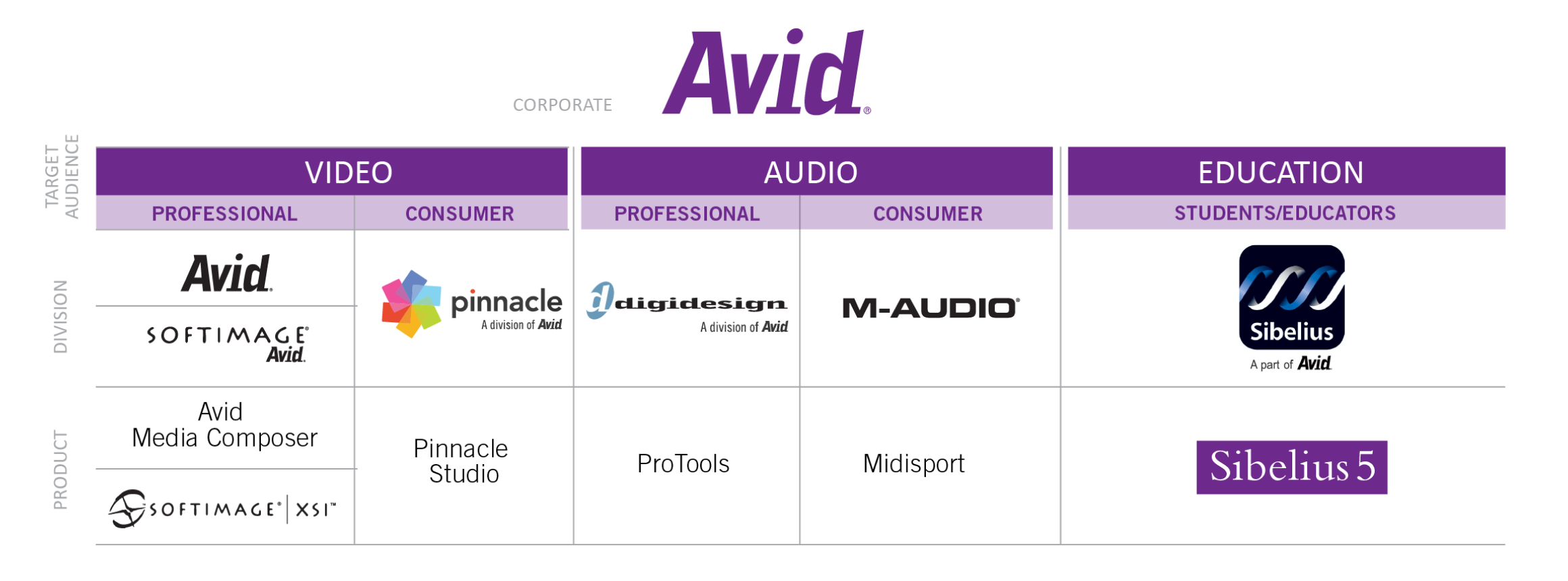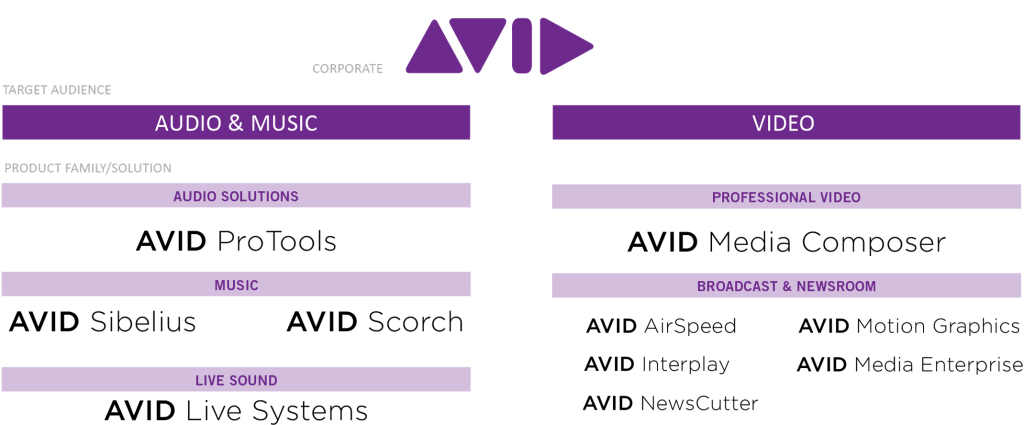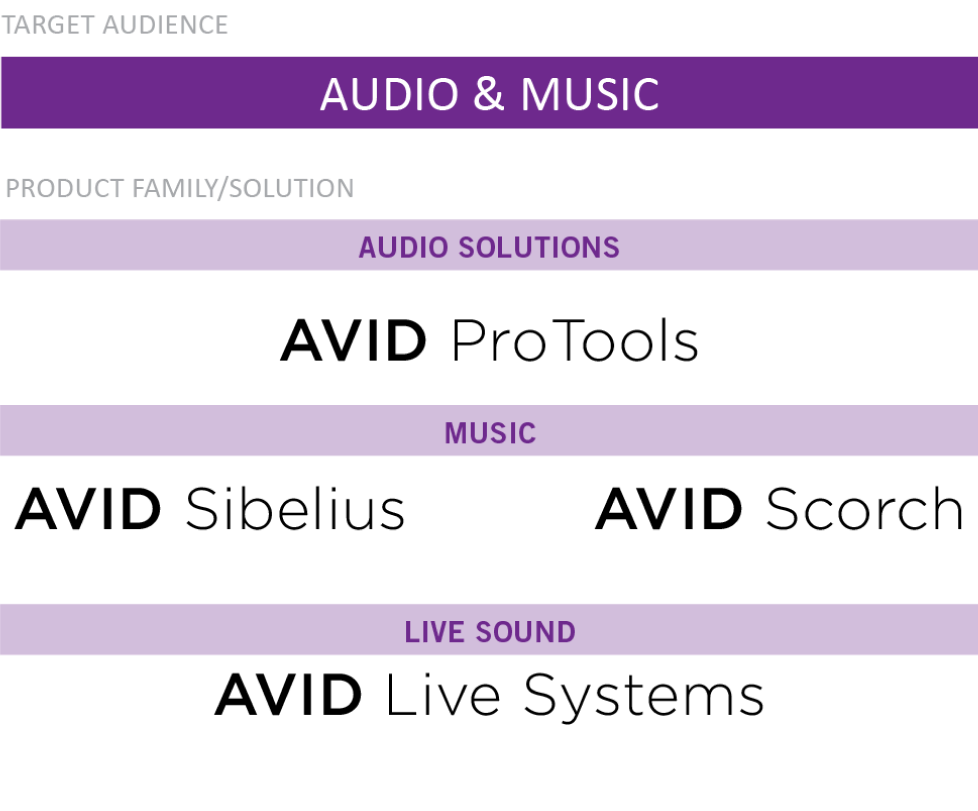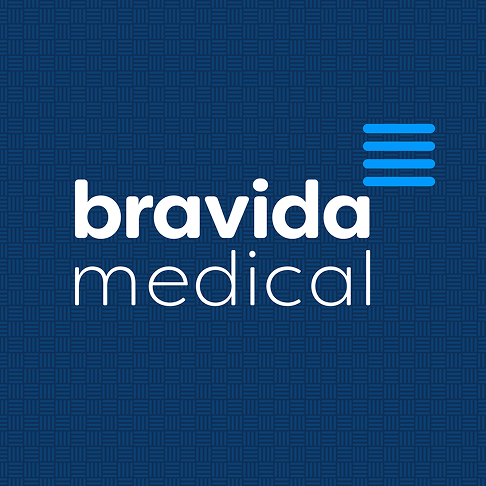Creating the perfect brand portfolio: Avid
After years of acquisitions, Avid Technology – a global leader in professional media tools – was operating as a fragmented collection of brands including Digidesign, M-Audio, Pinnacle Systems, Sibelius, and Softimage. These separate businesses served audio and video customers independently, creating market confusion and operational inefficiencies. Avid needed a unified brand strategy to capitalize on the convergence of digital audio and video technology while addressing growing customer demand for integrated solutions.

Our Approach



Solution
Our data revealed that a unified brand architecture would not only create operational efficiencies but also better align with how customers purchase and use these technologies. We recommended consolidating all product lines under the Avid master brand with a cohesive narrative emphasizing integration and interoperability. This strategy leveraged Avid’s unique position in the market – spanning the entire content creation ecosystem in ways no competitor could match.




